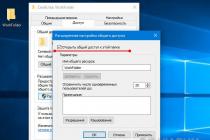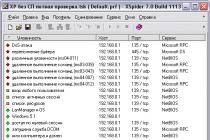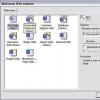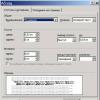Posts of Denmark on the website website. When added to a personal list, the movement of parcels is updated automatically.
Danish Post is the state postal service of Denmark, providing delivery of international postal items and internal correspondence for individuals and legal entities. It also provides express mail service and delivers EMS items. Tariffs for EMS delivery by Danish Post will be higher, but this is justified high speed delivery.
As a member of the Universal Postal Union, Danish Post operates in accordance with the rules of the Universal Postal Convention, which regulates international postal exchange between members. An essential provision of this regulation is the ban on the transport of certain items; Danish Post has no right to send such parcels. These include explosive, flammable or radioactive substances, as well as other dangerous goods, counterfeit and pirated products, objects of an obscene or immoral nature, etc.
What are the track numbers of the Danish Post
Postal items are of two categories and the main criterion for separation is the weight of the item: up to 2 kg - small packages, over - parcels. Shipments from Denmark up to 2 kg may not be tracked, but parcels and fast delivery of EMC shipments are always registered by the Danish Post and given a tracking number.
The Danish Post tracking number format looks like this:
- RT123456785DK - small package from Denmark;
- CA123456785DK - parcel from Denmark;
- EE123456785DK - express delivery from Denmark.
In the structure of the track number, in accordance with the international UPU format, letters and numbers have a semantic meaning:
- The first letter R / C / E - indicates the type of departure. The track number of the Danish Post, starting with the letter R (Registered), is assigned to registered small packages;
- 123456785 - this digital series ensures the uniqueness of the number;
- DK - indicates the country of the postal service.
Denmark Post Tracking
The track number of the Danish Post allows you to check the parcel and its condition on the way. At each stage of the transfer to single system tracking information about the movement is entered.
By the status of "Received shipment", the recipient can verify that it was sent. Then the parcels of the Danish Post for processing arrive at the sorting center, where they are distributed and sent to the international postal exchange point. Danish Post shipments are cleared through customs and handed over to the designated postal operator of the recipient's country. This is reported by the tracking status "export". And after import, approximately the same path is already in the country of the recipient. The last tracking status notifies you that the package has been released.
(previously Post Danmark A/S)
settlement (newspaper) - September 21, 1907;
settlement - March 21, 1923;
soldier - August 25, 1917
marks per year
Map of the Danish United Kingdom including Denmark, the Faroe Islands and Greenland
Premarching period
On July 16, 1653, the service was taken over by Paul Klingenberg, who introduced many innovations, including mail carriages to carry parcels and serve Norway. Klingenberg managed the postal service until March 14, 1685, and then handed it over to Count Christian Gyldenlöve (Christian Gyldenløve) - the nine-year-old son of King Christian V. In 1694, new routes and fares were approved. The Güldenlöwe family controlled the postal service until 1711, when it came under state control.
In July 1915, in connection with the introduction of new postage rates, service stamps were overprinted with the new value and the text "Danmark/Postfrim." . These stamps were used as postage stamps.
Additional payment
Surcharge stamps were introduced in May 1921. The first eight were definitive stamps from 1913-1919 overprinted with the word "Porto" (Additional payment). In June 1934 another stamp was issued with the same overprint on the 1926 definitive stamp. The remaining three issues are of the original drawing. The last issue of additional stamps took place in November 1955.
Since 1962, in accordance with the order of March 8, regular postage stamps have been used as additional stamps. They are pasted on the address side of the envelope on the left. Next to it is written by hand or a stamp is placed with the inscription Porto .
Airmail
In June 1925, the first Danish airmail stamps were issued. They depicted an airplane flying over a plowman. Airmail stamps could only be used to pay for airmail, although the latter could also be paid for with regular stamps. After canceling the additional payment for air mail correspondence on some lines, the release of air postage stamps at the end of April 1940 was discontinued. A total of 10 airmail stamps have been issued.
| 1871: service stamp from first issue (#3) |
1915: postage stamp. Overprint on service stamp (#82) |
1921: surcharge stamp from first issue (#3) |
1922: surcharge stamp original drawing ( #11) |
1925: First airmail stamp ( #143) |
Ferry line stamps
In 1918, two ferry lines between Leustør and Aggersund and between Esbjerg and Fanø were transferred to the Post Office. Since 1919, special stamps overprinted "Postfærge" (Postal ferry) have been used to pay for the transportation of parcels and other goods. They were pasted on parcels weighing up to 25 kg, and with a larger mass, on accompanying documents. The stamps were canceled with red, purple and black stamps. A total of 18 issues were made, including 47 stamps. The last issue took place in February 1975. The stamps were withdrawn from circulation in May 1977.
Prior to the transfer of ferry lines to the state, private labels were used on them.
Estimated
Since September 1907, the Danish postal service has been issuing so-called settlement stamps with the inscription "Avisporto / mærke" ("Newspaper stamp") to pay for the delivery of newspapers. There were three series of such stamps in total. They were withdrawn from circulation on January 1, 1917.
In June-November 1918, in connection with the introduction of new postage rates, the calculated stamps were overprinted with the new value and the text “Postfrim. /Danmark". These stamps were used as postage stamps.
For services provided by postal employees, for example, writing addresses, filling out forms, processing postal items at odd hours, etc., a special fee is charged in Denmark. From April 1, 1923 to 1962, these services were paid for with special settlement stamps, which were pasted on postal items. The first issue of settlement stamps - an overprint of the words "Gebir / Gebir" (Tariff) on a surcharge stamp with a face value of 10 øre, took place on March 21, 1923. The remaining three issues are of the original drawing, with the inscription "Gebirmærke". The last issue of settlement marks took place in February 1934. Most settlement marks were canceled with calendar stamps.
After the stocks of calculated stamps were used up, ordinary postage stamps began to be used. Large post offices use stamps with the inscription Gebyr and an indication of the cost.
Soldier
In August 1917, two stamps of the 1913 definitive series were overprinted "SF"("Soldier's Mark"). They were used for soldier's correspondence and were withdrawn from circulation at the end of March 1918.
Digital
Since 2011, the post of Denmark (and at the same time Sweden) is planned to introduce new system payment for postage - using "digital stamps". Payment is made via SMS porto to the short number 1900. After that, a digital code is sent to the sender's phone. It can be printed either directly on the envelope (where a postage stamp would normally be) or on separate sheet followed by cutting and pasting on any type of shipment - parcels, parcels or postcards that are not suitable for printing on a printer.
Issues of Danish territories
Schleswig
After the First World War, a plebiscite on the question of nationality was held in the northern part of Schleswig, which took place in the first zone in February, and in the second in March 1920. During the preparation and during the plebiscite, stamps of original drawings with the inscription lat. "Slesvig. Plebiscit" (Schleswig Plebiscite).
Service stamps were also issued - overprints on the postage stamps of Schleswig with the abbreviation fr. C.I.S. (Commission Interalliée Schleswig - International Commission for Schleswig).
The population of the first zone spoke in favor of joining Denmark, which occupied it on May 19. The next day, stamps with drawings of the plebiscitary issue were put into circulation, but in Danish currency and with a blue overprint "1 ZONE" (1 zone). Initially, stamp cancellation was done with German stamps, which were gradually replaced by Danish ones.
For the entire period of circulation of its own issues, 28 postage stamps were overprinted. On January 26, 1920, a blue overprint was made on a series of 14 denominations. C.I.S.(Commission Interalliée Slesvig, translated from French by the Inter-Allied Commission for Schleswig). It was intended for franking official correspondence of the Inter-Allied Commission of the Entente in Schleswig, which held a plebiscite in the region from January 26 to June 16, 1920. Another 14 denominations of the unissued series were overprinted on May 20, 1920 for use in Northern Schleswig 1.ZONE (Zone 1), which was ceded to Denmark after the partition under the Treaty of Versailles. It was in circulation until July 17, 1920.
Greenland
From 1905 to 1937 special Greenland parcel stamps were issued. In 1937, an independent post office for Greenland was established. From September 17, 1938, it received the right to forward and pay for all postage, as well as issue its own stamps. Greenland postage stamps have been issued since December 1, 1938.
Faroe islands
private mail
In the late 19th and early 20th centuries, private city post offices operated in Denmark. They issued their own stamps, which were inscribed with dates. "Bypost" or "Bymærke" and the name of the city.
The city post office operated in Copenhagen from 1878 to 1913, Aarhus from 1886 to 1890, Aalborg from 1884 to 1889, and in Odense, Viborg, Svenborg, Fredericia and other cities.
Whole things
Postcards for the 375th anniversary of the Danish post, published in 1999, were sent free of charge to every family living in the country for ten months. It was the same with a card encouraging children to write letters, which came out in 2000. Since 2001, postcards have been issued in series of five or four copies and sold as a set.
Charity stamps
In 1904, the world's first charity stamps (vignettes) appeared in Denmark. They were distributed through postal institutions, but did not serve to pay for postal correspondence. The funds raised from the sale of these stamps were transferred to charitable purposes - to raise money for the tuberculosis fund. The stamps went on sale around Christmas and were therefore called "Julmarken" ( "christmas stamps") .
see also
Notes
- www.postdanmark.dk
- postal history(English) (unavailable link - story) . company presentation. About us. Post Danmark. Retrieved January 7, 2010.
- // Encyclopedic Dictionary of Brockhaus and Efron
- Brink (2010).
- Denmark (Kingdom of Denmark)// Philatelic geography. European foreign countries / N. I. Vladinets. - M. : Radio and communication, 1981. - 160 p. (Retrieved October 5, 2010)
- Owner (1980).
- According to information from the Michel catalog.
- Published in Postal and Telegraph Journal, 1905, Vol. VIII; cm.: // Encyclopedic Dictionary of Brockhaus and Efron: in 86 volumes (82 volumes and 4 additional). - St. Petersburg. , 1890-1907.
To track your package, you need to follow a few simple steps.
1. Go to home page
2. Enter the track code in the field with the heading "Track the postal item"
3. Click on the "Track package" button located to the right of the field.
4. After a few seconds, the tracking result will be displayed.
5. Study the result, and especially carefully the last status.
6. Estimated delivery period, displayed in the track code information.
Try it, it's not hard ;)
If you do not understand the movement between postal companies, click on the link with the text "Group by companies", which is located under the tracking statuses.
If there are any difficulties with the statuses on English language, click on the link with the text "Translate to Russian", which is located under the tracking statuses.
Carefully read the "Track code information" block, where you will find estimated delivery times and other useful information.
If, when tracking, a block is displayed in a red frame, with the heading "Pay Attention!", Carefully read everything that is written in it.
In these information blocks, you will find 90% of the answers to all your questions.
If in the block "Pay Attention!" it is written that the track code is not tracked in the destination country, in this case, tracking the parcels becomes impossible after the parcel is sent to the destination country / after arriving at the Moscow Distribution Center / Item Arrived at Pulkovo / Arrived at Pulkovo / Left Luxembourg / Left Helsinki / Sending to the Russian Federation or after a long pause of 1 - 2 weeks, it is impossible to track the location of the parcel. No, and nowhere. Not at all =)
In this case, you need to wait for a notification from your post office.
To calculate delivery times in Russia (for example, after export, from Moscow to your city), use the "Delivery deadlines calculator"
If the seller promised that the parcel would arrive in two weeks, and the parcel travels for more than two weeks, this is normal, the sellers are interested in sales, and therefore they are misleading.
If less than 7 - 14 days have passed since the receipt of the track code, and the parcel is not tracked, or the seller claims that he sent the parcel, and the parcel status is "the item pre-advised" / "Received email notification"does not change for several days, this is normal, you can read more by clicking on the link:.
If the status of the mail item does not change for 7 - 20 days, do not worry, this is normal for international mail.
If your previous orders arrived in 2-3 weeks, and the new package takes more than a month, this is normal, because. parcels go by different routes, different ways, can wait for sending by plane 1 day, or maybe a week.
If the package is out of sorting center, customs, waypoint and there are no new statuses within 7 - 20 days, do not worry, the parcel is not a courier who carries a parcel from one city to your home. In order for a new status to appear, the parcel must arrive, unload, be scanned, etc. at the next sorting point or post office, and this takes much more time than just getting from one city to another.
If you do not understand the meaning of such statuses as Acceptance / Export / Import / Arrived at the place of delivery, etc., you can see the transcript of the main statuses of international mail:
If 5 days before the end of the protection period, the parcel is not delivered to your Postal office, You have the right to open a dispute.
If, based on the above, you did not understand anything, read this instruction again, and again, until complete enlightenment;)
To track your package, you need to follow a few simple steps.
1. Go to the main page
2. Enter the track code in the field with the heading "Track the postal item"
3. Click on the "Track package" button located to the right of the field.
4. After a few seconds, the tracking result will be displayed.
5. Study the result, and especially carefully the last status.
6. Estimated delivery period, displayed in the track code information.
Try it, it's not hard ;)
If you do not understand the movements between postal companies, click on the link with the text "Group by companies", which is located under the tracking statuses.
If you have any difficulties with the statuses in English, click on the link with the text "Translate to Russian", which is located under the tracking statuses.
Carefully read the "Track code information" block, where you will find estimated delivery times and other useful information.
If, when tracking, a block is displayed in a red frame, with the heading "Pay Attention!", Carefully read everything that is written in it.
In these information blocks, you will find 90% of the answers to all your questions.
If in the block "Pay Attention!" it is written that the track code is not tracked in the country of destination, in this case tracking parcels becomes impossible after the parcel is sent to the country of destination / after arriving at the Moscow Distribution Center / Item Arrived at Pulkovo / Arrived at Pulkovo / Left Luxembourg / Left Helsinki / Sending to the Russian Federation or after a long pause of 1 - 2 weeks, it is impossible to track the location of the parcel. No, and nowhere. Not at all =)
In this case, you need to wait for a notification from your post office.
To calculate delivery times in Russia (for example, after export, from Moscow to your city), use the "Delivery deadlines calculator"
If the seller promised that the parcel would arrive in two weeks, and the parcel travels for more than two weeks, this is normal, the sellers are interested in sales, and therefore they are misleading.
If less than 7 - 14 days have passed since the receipt of the track code, and the package is not tracked, or the seller claims that he sent the package, and the status of the package "the item pre-advised" / "Email notification received" does not change for several days, this is normal, You can read more by clicking on the link:.
If the status of the mail item does not change for 7 - 20 days, do not worry, this is normal for international mail.
If your previous orders arrived in 2-3 weeks, and the new package takes more than a month, this is normal, because. parcels go by different routes, in different ways, they can wait for dispatch by plane for 1 day, or maybe a week.
If the parcel left the sorting center, customs, intermediate point and there are no new statuses within 7 - 20 days, do not worry, the parcel is not a courier who carries a parcel from one city to your home. In order for a new status to appear, the parcel must arrive, unload, be scanned, etc. at the next sorting point or post office, and this takes much more time than just getting from one city to another.
If you do not understand the meaning of such statuses as Acceptance / Export / Import / Arrived at the place of delivery, etc., you can see the transcript of the main statuses of international mail:
If the parcel is not delivered to your post office 5 days before the end of the protection period, you have the right to open a dispute.
If, based on the above, you did not understand anything, read this instruction again, and again, until complete enlightenment;)














